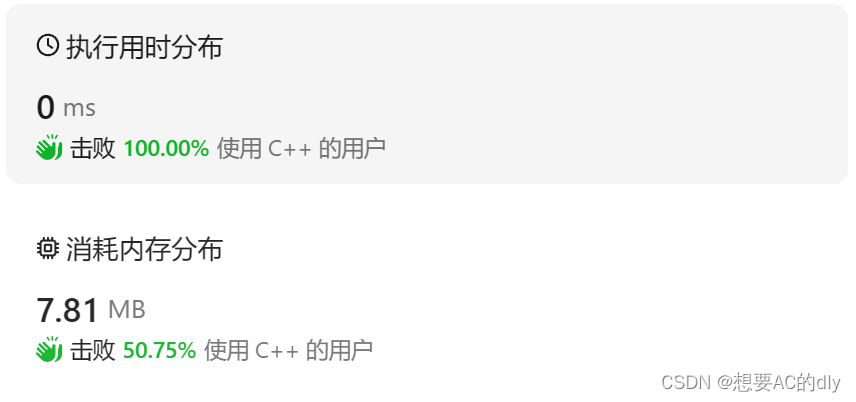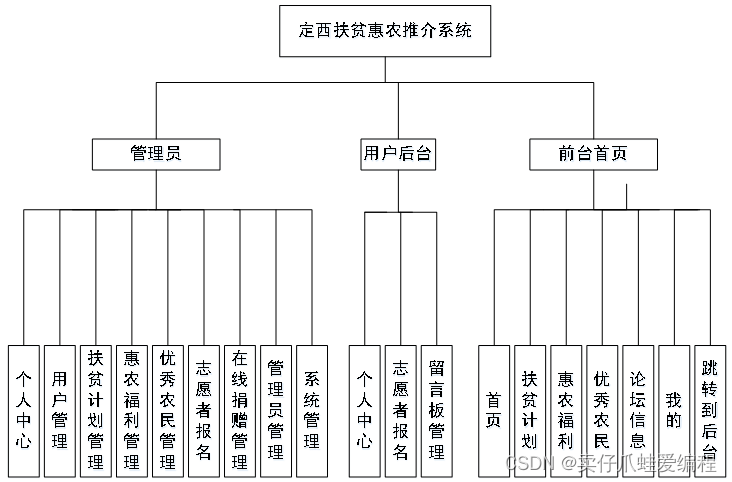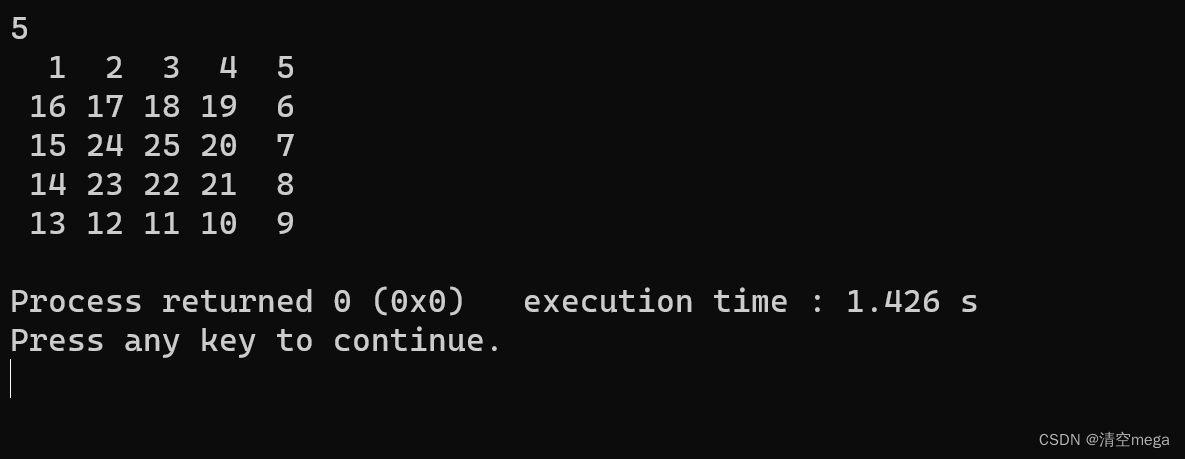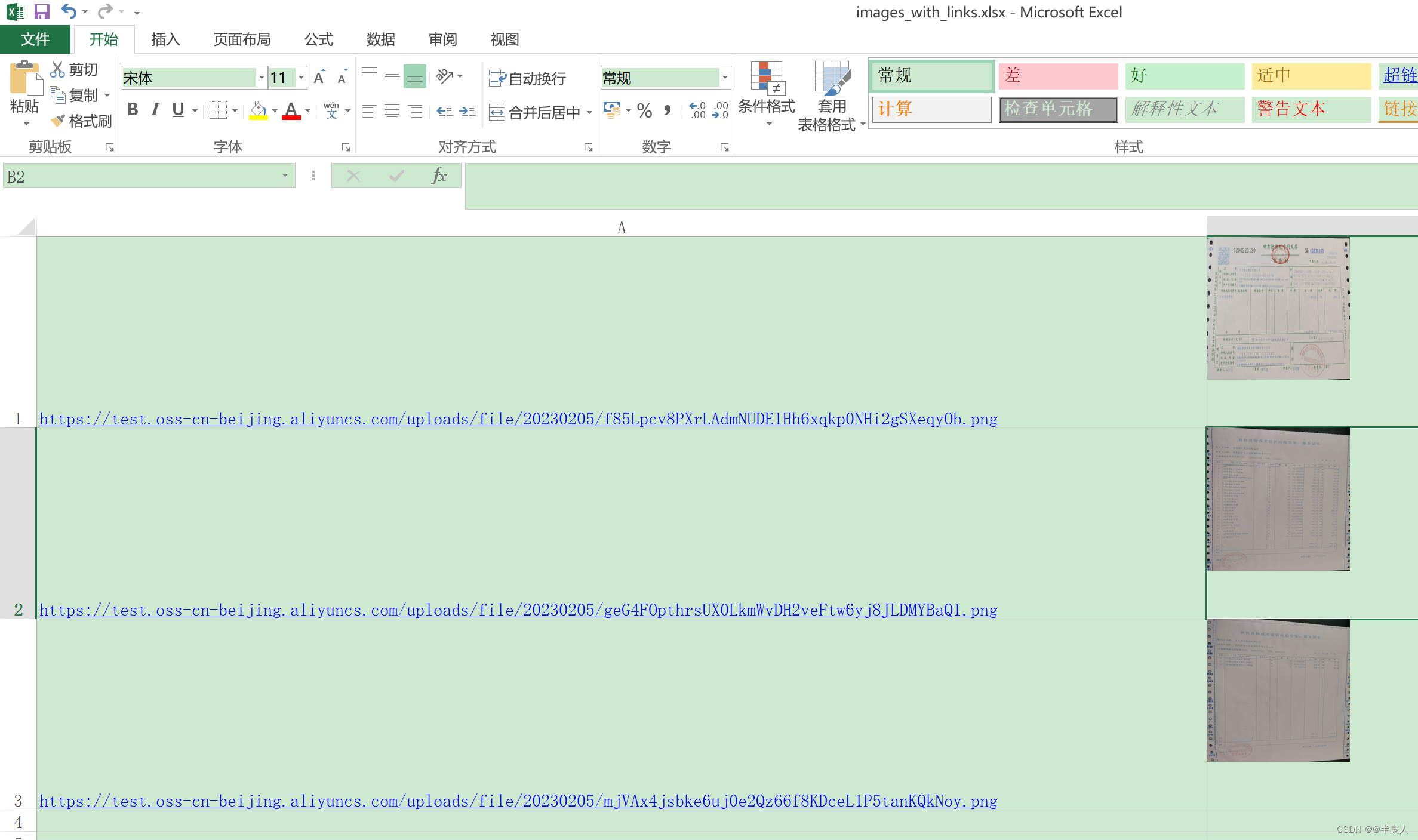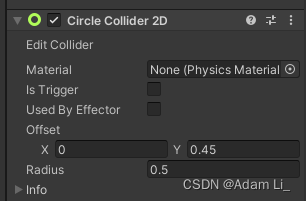7-7 C# 1.12 区间找数
编写控制台应用程序,根据用户输入的a、b、c、d值(均为正整数且a不大于b),输出在[a, b]区间中能被c整除,但是不能被d整除的数。
输入格式:
用户在一行中输入四个正整数,分别对应a、b、c、d,相邻的两个数中间用一个空格间隔。
输出格式:
输出在[a, b]区间中能被c整除,但是不能被d整除的数,每五个数换行(每行中的两个相邻数字之间用一个空格间隔)。
输入样例:
在这里给出一组输入。例如:
1 20 2 3
输出样例:
在这里给出相应的输出。例如:
2 4 8 10 14
16 20
class Solution7_7
{public static int a, b, c, d;public static string input;static void Main(string[] args){List<int> list = new List<int>();string[] input = Console.ReadLine().Split(' ');a = Convert.ToInt32(input[0]);b = Convert.ToInt32(input[1]);c = Convert.ToInt32(input[2]);d = Convert.ToInt32(input[3]);for (int i = a; i <= b; i++){if (i % c == 0 && i % d != 0){list.Add(i);}}for (int i = 0; i < list.Count; i++){Console.Write(list[i]);if ((i + 1) % 5 == 0){Console.Write('\n');}else if (i != list.Count - 1){Console.Write(' ');}}}
}
7-8 C# 1.13 成绩排序
编写控制台应用程序,用户输入n(n>0)位同学的学号(由3位数字构成)和成绩([0,100]),按照成绩的降序输出相应同学的学号。(每位同学的学号不同,如果多位同学成绩相同,则按学号升序输出)
输入格式:
用户输入n值。
逐行输入一位同学的学号和成绩,学号和成绩之间用一个空格间隔。共输入n行。
输出格式:
按成绩降序换行输出相应学生的学号。成绩相同的学生按学号升序在一行输出(每行中的两个相邻学号之间用一个空格间隔)。
输入样例:
在这里给出一组输入。例如:
4
988 70
782 80
777 80
451 67
输出样例:
在这里给出相应的输出。例如:
777 782
988
451
class Solution7_8
{static void Main(string[] args){int n = Convert.ToInt32(Console.ReadLine());Dictionary<string, int> studentScores = new Dictionary<string, int>();for (int i = 0; i < n; i++){string[] input = Console.ReadLine().Split(' ');string studentID = input[0];int score = Convert.ToInt32(input[1]);studentScores.Add(studentID, score);}// 使用List排序,根据成绩降序排序,成绩相同的学生按学号升序排列List<KeyValuePair<string, int>> sortedList = new List<KeyValuePair<string, int>>(studentScores);sortedList.Sort((x, y) =>{if (x.Value != y.Value)return y.Value.CompareTo(x.Value);elsereturn x.Key.CompareTo(y.Key);});// 输出结果for(int i = 0; i < sortedList.Count;i++){List<string> tmp = new List<string>();int j = i;while(j < sortedList.Count && sortedList[j].Value == sortedList[i].Value) {tmp.Add(sortedList[j].Key);j++;}for(int k = 0; k < tmp.Count; k++){Console.Write(tmp[k]);if(k != tmp.Count - 1){Console.Write(' ');}else{Console.WriteLine();}}i = j - 1;}}
}
7-9 C# 1.14 轮盘抽奖
用户定制一个抽奖轮盘,用户先输入轮盘上的扇形格子数n(n>0)。再按照轮盘顺时针方向依次输入n个格子上的奖项名称(字符串,可以重名)。最后输入一个整数m(1<=m<=100)代表轮盘顺时针旋转m个格子,输出从第一个轮盘扇形格子顺时针转动m个格子时轮盘的当前格子的奖项名称。
输入格式:
输入n(n>0)值。
输入n个奖项名称(可以重名),两个相邻奖项名称之间用一个空格间隔。
输入m([1,100])值。
输出格式:
输出轮盘顺时针旋转m个扇形格子后,转到的格子对应奖项名称。
输入样例:
在这里给出一组输入。例如:
4
a b c b
5
输出样例:
在这里给出相应的输出。例如:
b
class Solution7_9
{static void Main(string[] args){int n = Convert.ToInt32(Console.ReadLine());String[] input = Console.ReadLine().Split(' ');int m = Convert.ToInt32(Console.ReadLine());int now = 0;now = (now + m) % n;Console.WriteLine(input[now]);}
}
7-10 C# 1.16 求累加和
编程计算a+aa+aaa+…+aa…a(n个a)的值,n和a由键盘输入。
输入格式:
第一行输入一个正整数值n(0<n<19)
第二行输出一个正整数值a(0<a<10)
输出格式:
对每一组输入,在一行中输出累加和。
输入样例:
在这里给出一组输入。例如:
4
1
输出样例:
在这里给出相应的输出。例如:
1234
class Solution7_10
{public static long GenerateNum(long len, long x){long res = 0;for(int i = 0; i < len; i++){res = res * 10 + x;}return res;}static void Main(string[] args){long n, a;n = Convert.ToInt32(Console.ReadLine());a = Convert.ToInt32(Console.ReadLine());long ans = 0;for(int i = 1; i <= n; i++){ans += GenerateNum(i, a);}Console.WriteLine(ans);}
}
7-11 C# 1.15 回文数判定
从键盘上输入任意正整数,编程判断该数是否为回文数。所谓的回文数就是从左到右读这个数与从右到左读这个数是一样的。
输入格式:
输入一个正整数值
输出格式:
对每个输入,在一行中输出“yes”或“no”。
输入样例:
在这里给出一组输入。例如:
12021
输出样例:
在这里给出相应的输出。例如:
yes
using System;
using System.Collections.Generic;
using System.Text;class Solution7_11
{public static bool is_palindrome(string s){StringBuilder t = new StringBuilder("");for(int i = s.Length - 1; i >= 0; i--){t.Append(s[i]);}return s == t.ToString();}static void Main(string[] args){String s = Console.ReadLine();if (is_palindrome(s)){Console.WriteLine("yes");}else{Console.WriteLine("no");}}
}

